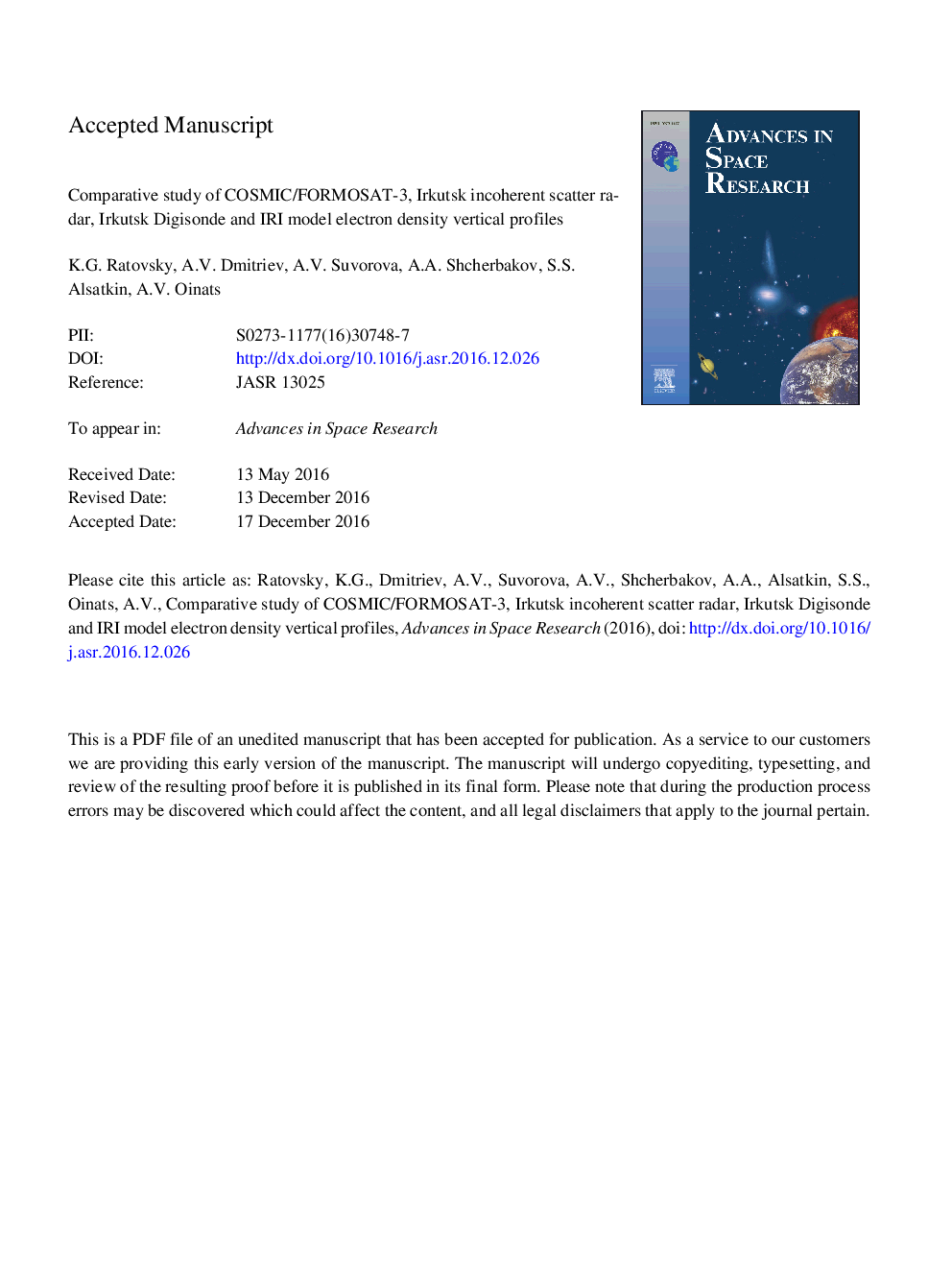| Article ID | Journal | Published Year | Pages | File Type |
|---|---|---|---|---|
| 5486176 | Advances in Space Research | 2017 | 19 Pages |
Abstract
The long-duration continuous Irkutsk incoherent scatter radar observations allowed us to collect 337 electron density vertical profiles obtained almost simultaneously with the radar and the COSMIC in the radar vicinity. The COSMIC electron density profiles were compared with those from the radar, Digisonde, and the IRI model. The comparison included 4 seasons and 2 solar activity levels (low and moderate). The number of simultaneous cases was â¼10 times more than in the previous incoherent scatter radar comparisons. In the case of the bottomside characteristics (peak density and bottomside electron content), the deviations between the COSMIC and the ground-based facilities data may be interpreted as the COSMIC measurement errors without significant systematic biases and with root-mean-square values that are â¼1.4-1.6 times smaller those that from the IRI model prediction. In the case of the topside characteristics (topside electron content and ionospheric electron content), the IRI model overestimates the COSMIC data by 0.6-0.8Â tecu on average, and the COSMIC overestimates the Irkutsk incoherent scatter radar data by 1.0-1.1Â tecu on average. The percentage differences between the radar and COSMIC in the topside electron content can reach 80%. In terms of the root-mean-square deviation, the COSMIC and the radar agree better than each of them agrees with the IRI model.
Related Topics
Physical Sciences and Engineering
Earth and Planetary Sciences
Space and Planetary Science
Authors
K.G. Ratovsky, A.V. Dmitriev, A.V. Suvorova, A.A. Shcherbakov, S.S. Alsatkin, A.V. Oinats,
